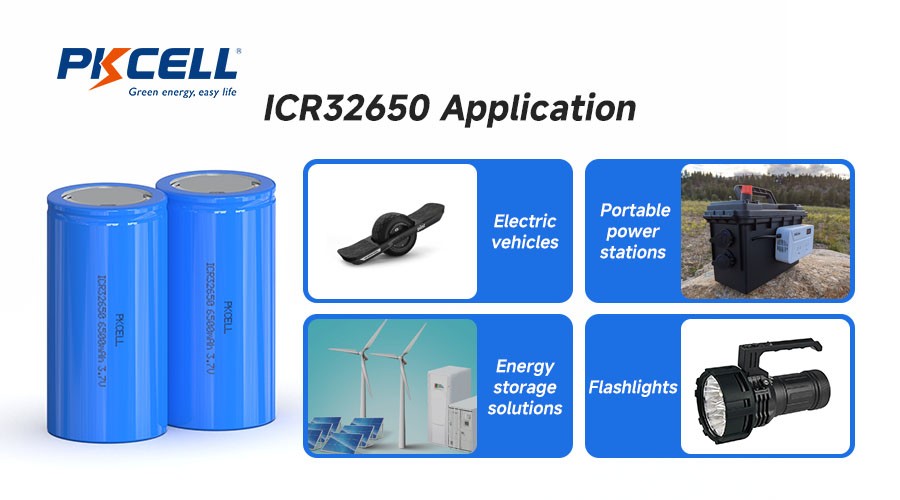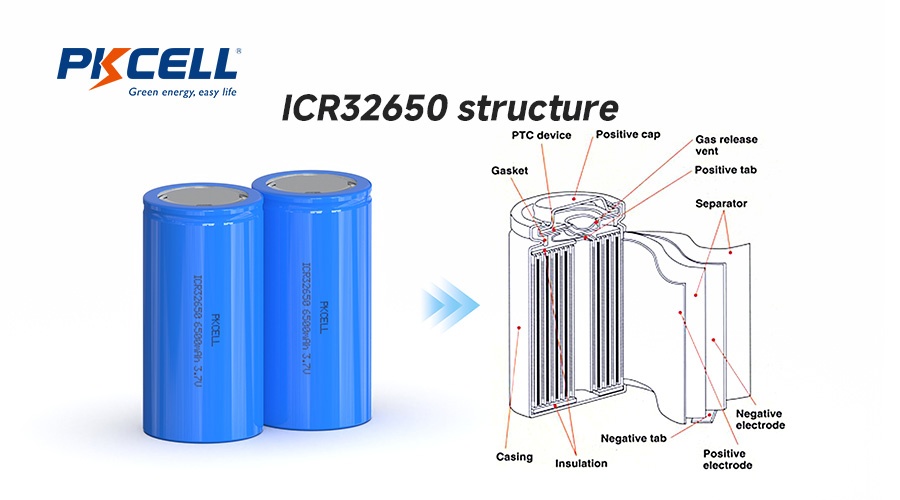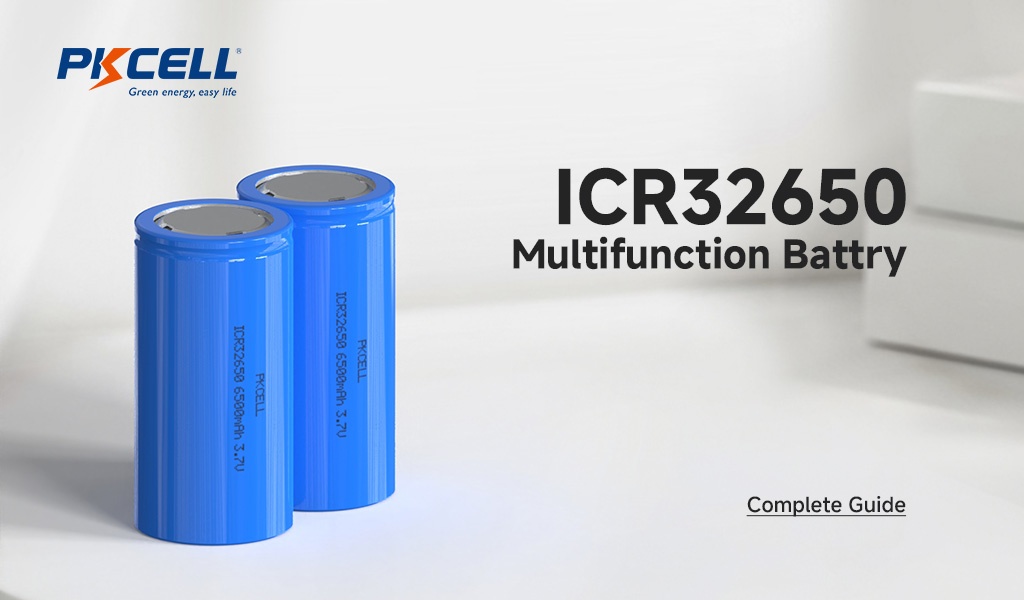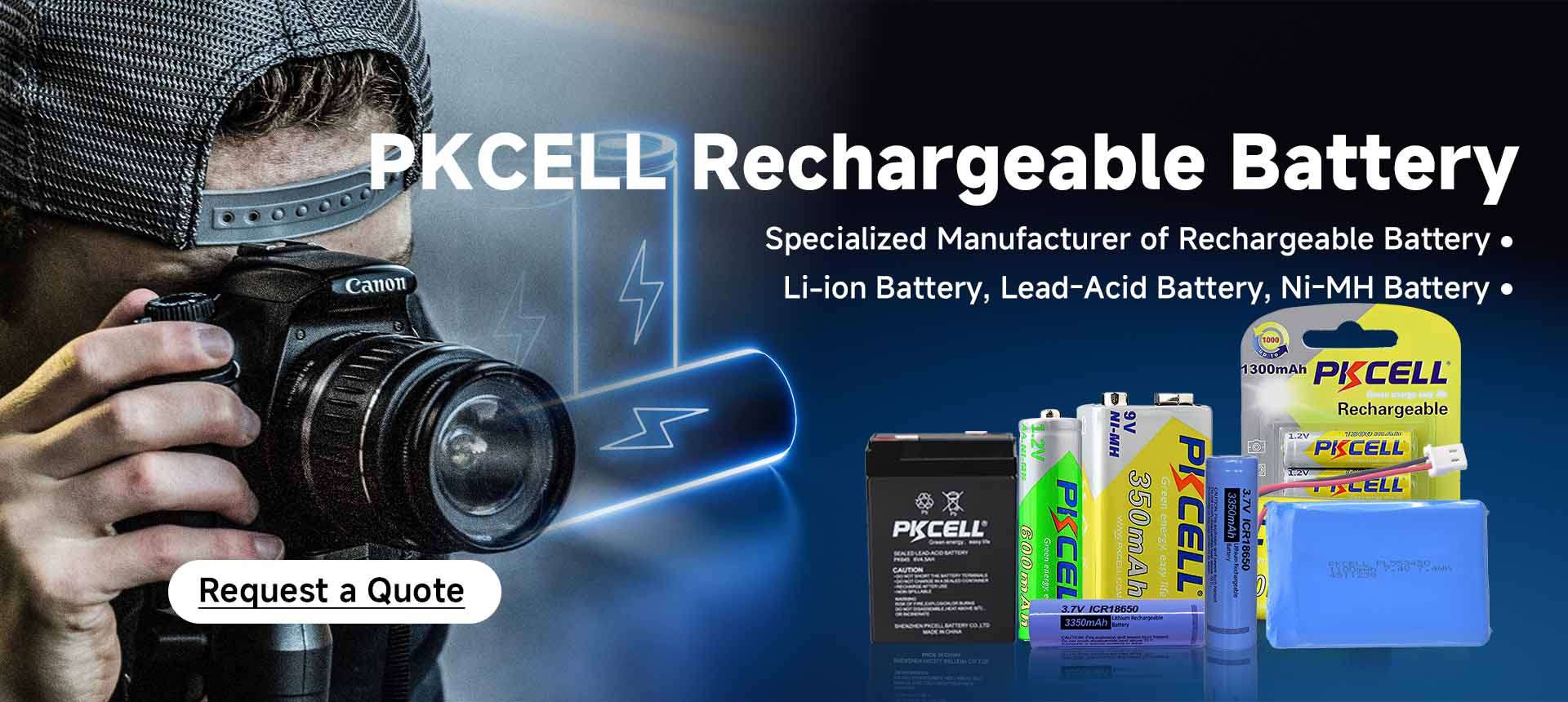Key Highlights
- The ICR32650 represents one of the largest standard-size cylindrical rechargeable lithium-ion batteries, frequently utilized for demanding applications like energy storage and electric vehicles.
- These batteries offer high capacity, ranging from 5000mAh to 8500mAh, accommodating significant energy storage needs within compact designs.
- With a nominal voltage of 3.6- 3.7V, ICR32650 excels in consistent performance across high-drain devices and battery packs.
- Core chemistries like Lithium Cobalt Oxide influence energy density and charging abilities.
- Features such as the Battery Management System (BMS) provide enhanced safety against short circuits and overcharging risks.
- Versatile applications include flashlights, electric bikes, portable power stations, and electric scooters.
Introduction
Lithium-ion batteries play a critical role in portable electronics and energy storage solutions, with the ICR32650 among the most notable options available. As a rechargeable NMC battery, the ICR32650 is particularly advantageous due to its high capacity and reliable specifications, making it ideal for large-scale applications. With its robust construction and dependable performance, this battery offers both safety features and consistent energy delivery for demanding devices. The specifications of ICR32650 set the foundation for our deeper exploration of its components, uses, and maintenance methods//.
Overview of ICR32650 Lithium-Ion Batteries
The ICR32650 battery stands out in the realm of cylindrical rechargeable lithium batteries, recognised for its impressive energy capacity, compact size, and durable design. With a height of 65mm and a diameter of 32mm, this size accommodates high-performance devices such as electric bikes and scooters.
Its versatile battery packs provide reliable power with nominal voltage ranges between 3.6V and 3.7V. Such specifications allow the ICR32650 to perform effectively in high-drain devices, ensuring plenty of current for electric vehicles or flashlights. This dependable battery is key for energy storage solutions.
Key Specifications and Performance Metrics
Understanding the technical specifications of ICR32650 batteries sheds light on their reliability and high capacity. Below is a text table summarising the key details:
| Feature | Description |
|---|---|
| Nominal Voltage | 3.6-3.7V |
| Nominal Capacity | 5000-8500mAh |
| Charging Voltage | Up to 4.2V (maximum recommended) |
| Physical Dimensions | Diameter: 32mm; Height: 65mm |
| Discharge Characteristics | Limited to 1.5 C currents; ample for flashlights & toys |
These metrics underscore the compatibility of ICR32650 batteries with high-drain devices. They deliver long-lasting power while maintaining safety parameters through built-in Battery Management Systems. Efficient discharge performance ensures reliability, while manageable physical dimensions make them convenient for various designs.
Common Applications of ICR32650 Batteries

The versatility of the ICR32650 battery supports its widespread adoption across industries. Remarkable energy density allows it to meet high-power demands efficiently.
- Electric vehicles rely on these batteries for their dependable performance and compact energy storage options.
- Energy storage solutions use ICR32650 for their ability to maintain consistent capacity under high-drain conditions.
- Devices like portable power stations benefit from their portable energy supply.
- High-powered flashlights and electric bikes utilise their robust output and high current availability.
From powering daily essentials to driving innovative transportation methods, these batteries offer reliable solutions that combine energy efficiency, safety, and performance. Their vast application scope solidifies their position as a preferred choice for demanding uses.
Core Components and Chemistry of ICR32650

The chemistry of ICR32650 batteries is a critical aspect of their functionality. They often feature advanced cathodes like Lithium Cobalt Oxide, ensuring higher energy densities. Additionally, alternative chemistries such as Lithium Manganese Oxide or Lithium Manganese Nickel and Lithium Iron Phosphate cater to specific performance needs.
The construction includes materials optimised for stable energy regulation, with the anode and cathode forming the essential charge-discharge framework. The chemistry impacts the battery’s energy storage capability and its ability to provide consistent power across various devices.
Cathode and Anode Materials Explained
The cathode and anode are crucial elements in the performance of cylindrical rechargeable lithium batteries like the ICR32650. Typically, the cathode is made from lithium manganese oxide (LMO) or lithium cobalt oxide (LCO), providing high energy density and stability. These materials contribute to the nominal voltage and discharge characteristics, ensuring plenty of current for applications ranging from portable power stations to electric vehicles and scooters.
On the anode side, graphite is commonly used due to its excellent conductivity and ability to accommodate lithium ions during charging and discharging. Other emerging materials, such as lithium iron phosphate (LFP), offer enhanced safety and longevity but may have slightly lower capacity. Understanding these materials helps optimize the battery management system (BMS) for maximum reliability and performance across various uses.
How the 32650 Differs from Other Lithium-Ion Cells
The ICR32650 lithium battery, rated at 5000-8500 mAh, takes its place among the largest standard-sized cylindrical cells. Its larger physical size offers a higher capacity compared to smaller alternatives like 18650 batteries.
However, the 32650′s unique features come with trade-offs. While IMR or INR batteries deliver larger currents, the ICR32650 focuses on higher capacity with slightly lower current output. This makes the ICR variant suitable for devices prioritizing energy density over discharge rate, like flashlights and energy storage systems.
Another distinction lies in its compatibility—it maintains adequacy for appliances requiring plenty of currents, but users must check whether devices accept alternative options such as slightly larger 32700 batteries. These stand-out differences align the 32650 as an irreplaceable energy source in certain applications.
Safe Usage and Maintenance Tips for ICR32650
Safety remains paramount when using ICR32650 lithium batteries. Employing a Battery Management System (BMS) is essential to prevent risks like short circuits, overheating, or incorrect charging voltage.
Proper storage and usage maintain the battery’s functionality. Avoid exposing it to extreme temperatures or overcharging, as this can hinder performance and reliability. Following recommended safeguards ensures your lithium batteries deliver consistent high capacity while promoting a longer operational lifespan.
Charging Best Practices and Protection Features
Optimized charging practices enable the ICR32650 to perform effectively while minimizing risks.
- Use chargers that support a maximum voltage of 4.2V, tailored to lithium-ion chemistry.
- Incorporate a Battery Management System (BMS) within the circuitry to prevent over-discharge and overheating.
- Avoid exposing batteries to short-circuit scenarios through proper handling.
- Charge batteries at regulated temperatures to preserve their operational consistency.
Protection features such as temperature monitoring and voltage regulation embedded in the BMS help manage safety. These implementations work collectively to extend performance reliability and safeguard your devices.
Factors Affecting Battery Lifespan and Reliability
The operational lifespan of ICR32650 batteries is influenced by multiple factors. Discharge patterns, including extreme over-discharging, can impact the battery reliability significantly.
Environmental conditions also play a role. Low temperatures affect efficiency, while high temperatures risk safety and longevity. Keeping batteries within recommended conditions ensures optimal performance. Regular maintenance further promotes durability, with practices like cell balancing contributing to increased lifespan.
Understanding these parameters helps mitigate risks and sustain the dependability of these rechargeable lithium batteries over several cycles.
Why choose PKCELL for ICR32650 battery?
When sourcing ICR32650 batteries, PKCELL is a smart, reliable choice. With nearly two decades of lithium battery R&D and manufacturing experience, PKCELL provides ICR32650 cells known for high energy density, safety, and long cycle life. Our automated production, rigorous quality checks, and ISO9001 certification ensure consistent standards. Choose PKCELL for innovation, reliability, and excellent service from a trusted global leader. Contact us for details.
Conclusion
In summary, understanding ICR32650 lithium-ion batteries is essential for maximizing their performance and lifespan. With key specifications and applications outlined, it becomes clear that these batteries offer unique advantages in various settings. By adhering to safe usage practices and recognizing the chemistry behind these cells, users can ensure their devices operate efficiently and reliably. As you explore the potential of ICR32650 batteries, consider how they can optimize your energy needs. For tailored solutions and the best prices, get in touch with us to receive quotes for commercial applications.
Frequently Asked Questions
Are ICR32650 batteries interchangeable with other lithium-ion battery sizes?
No, ICR32650 batteries are not universally interchangeable due to specific physical dimensions and capacity differences. Their compatibility with devices depends on matching specifications outlined for the battery pack. Always confirm dimension requirements before replacing batteries.
How can I maximize the lifespan of my ICR32650 battery?
Stick to consistent charging best practices and avoid deep discharge cycles. Routine maintenance and optimal storage conditions enhance longevity. Protect the battery from extreme temperature changes to sustain its lifespan and reliability.
Is the ICR32650 battery suitable for high-drain devices?
Yes, ICR32650 batteries, with their high capacity, deliver adequate currents for applications such as electric scooters and power-demanding tools. However, IMR batteries might be preferred for devices needing larger currents under extreme settings.
Post time: Jun-23-2025





